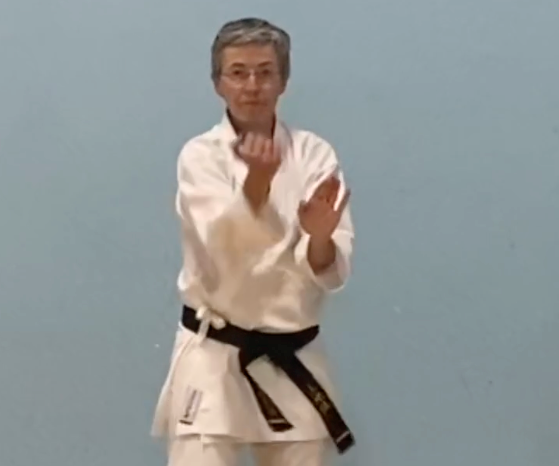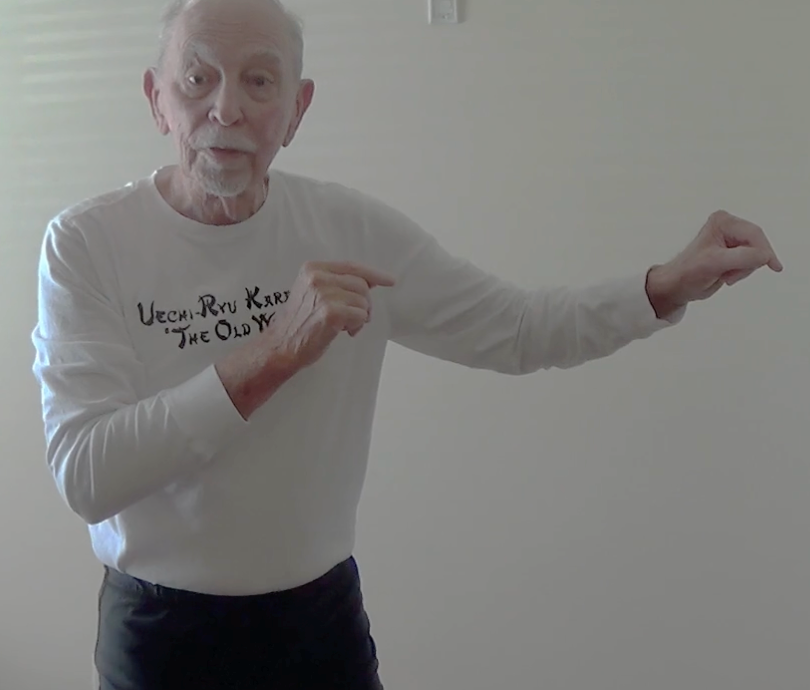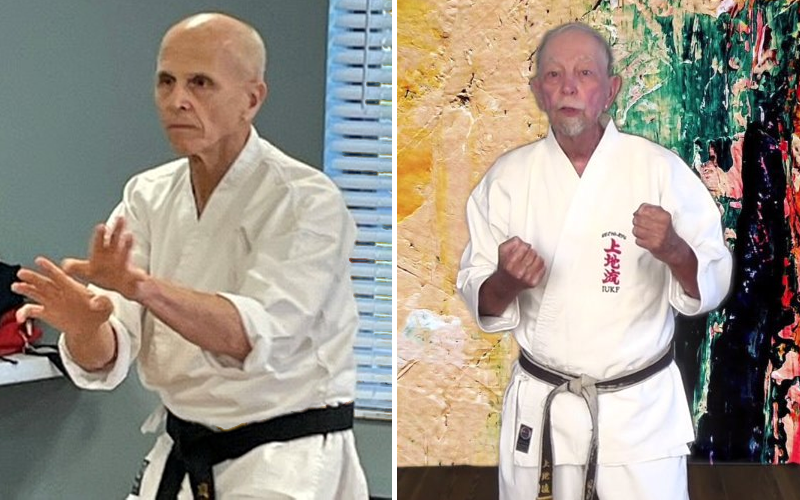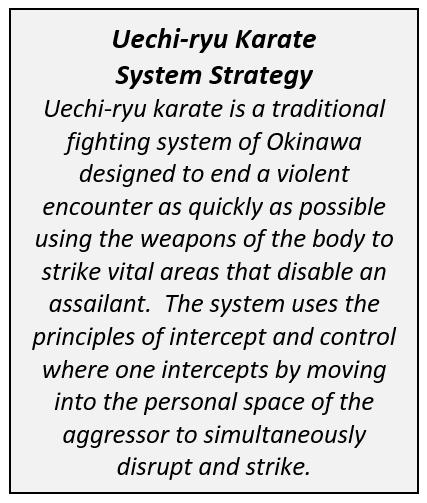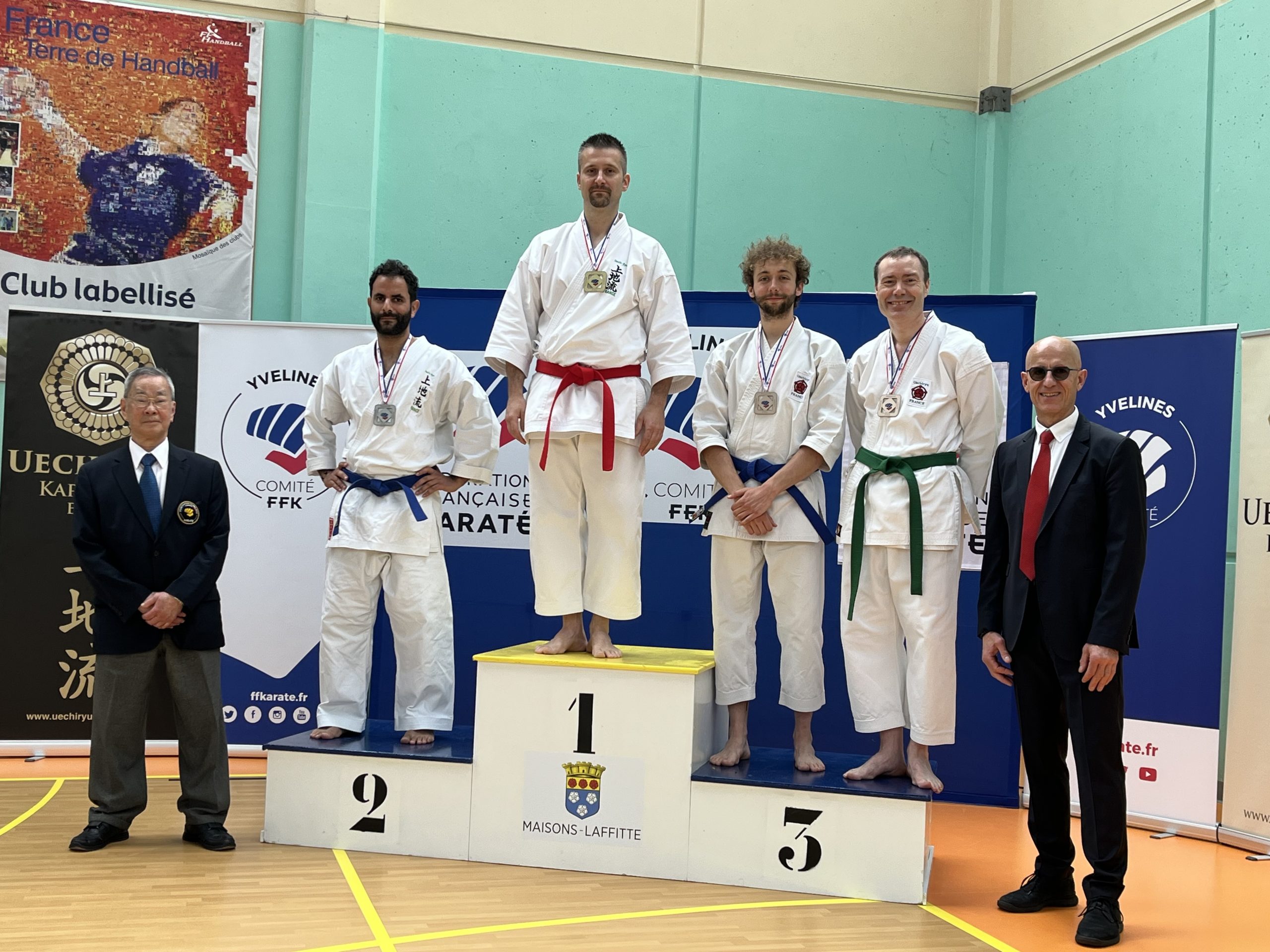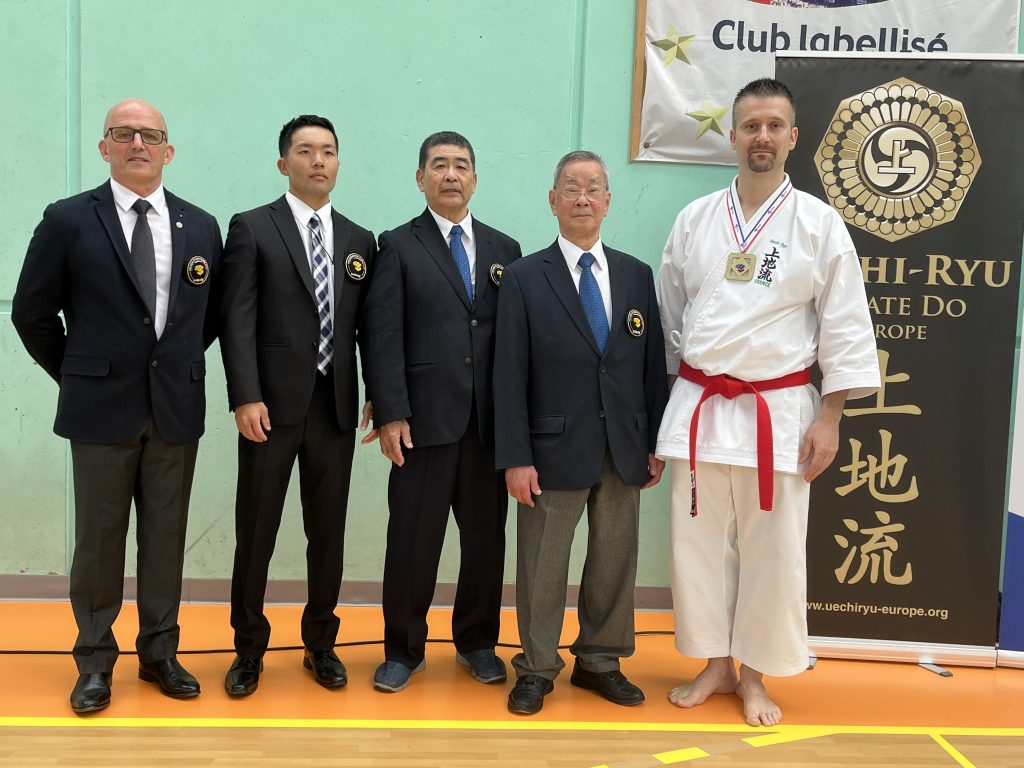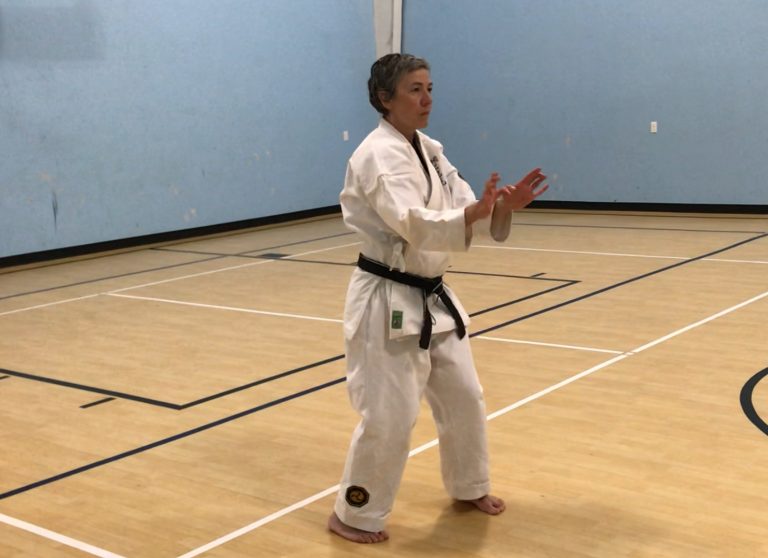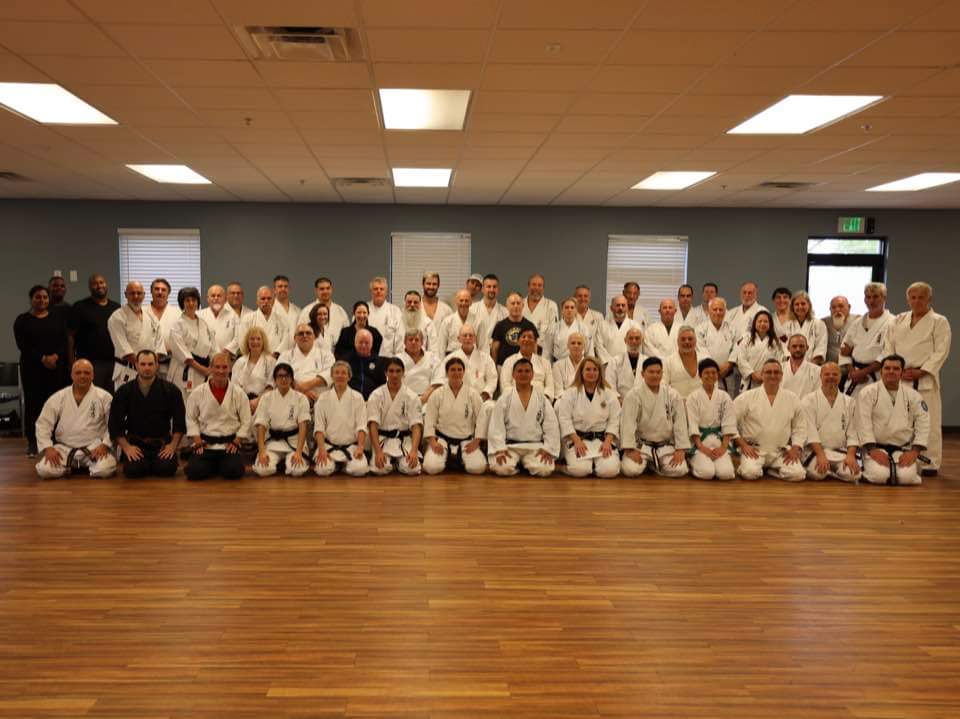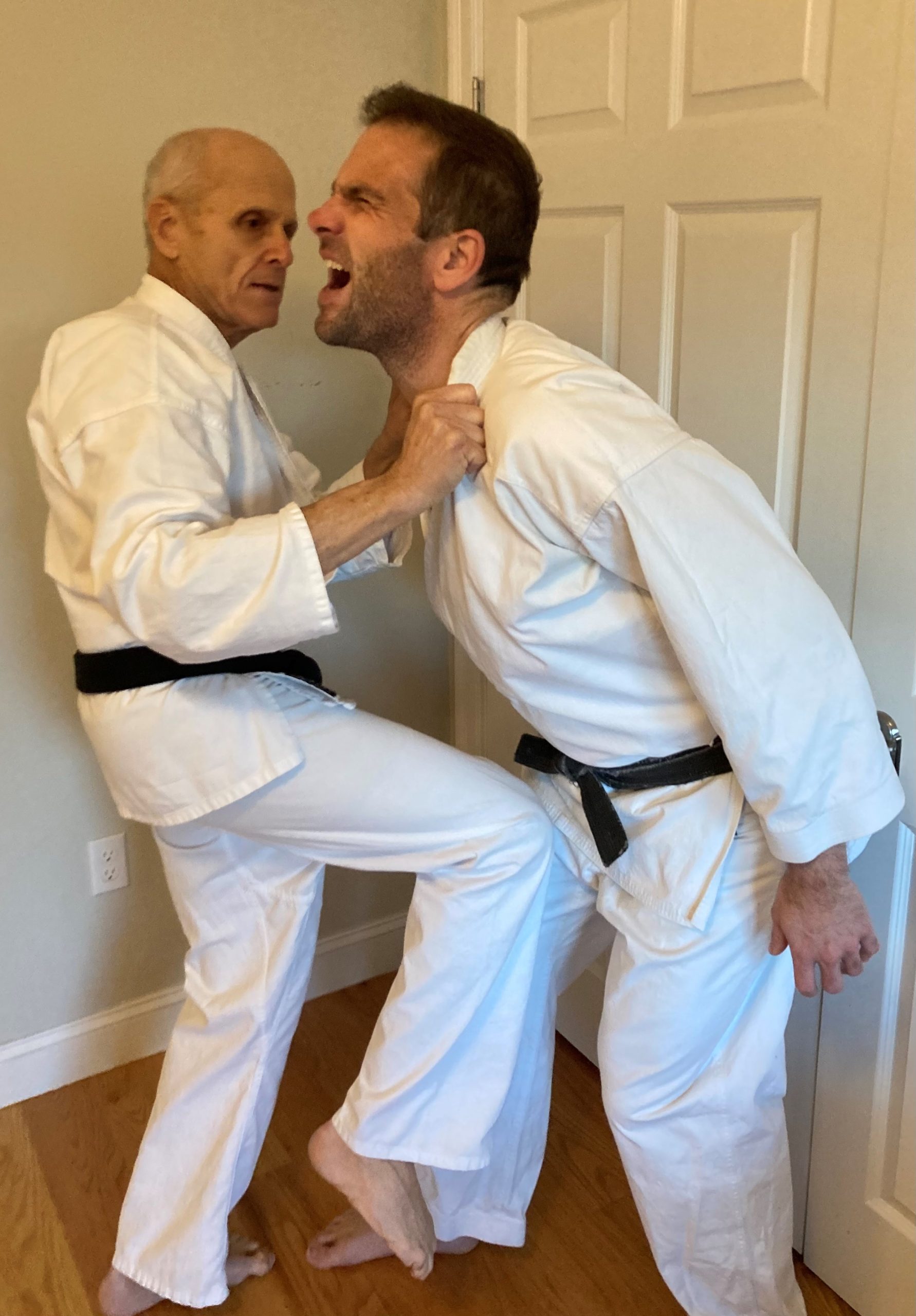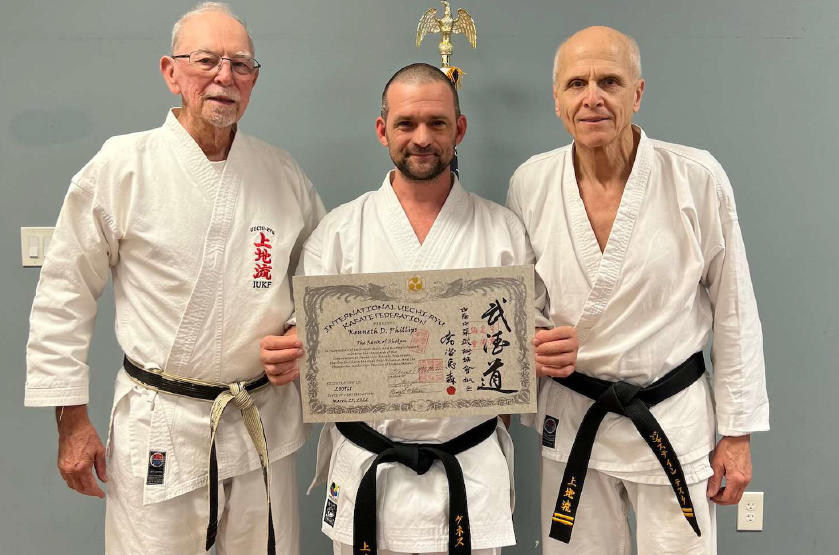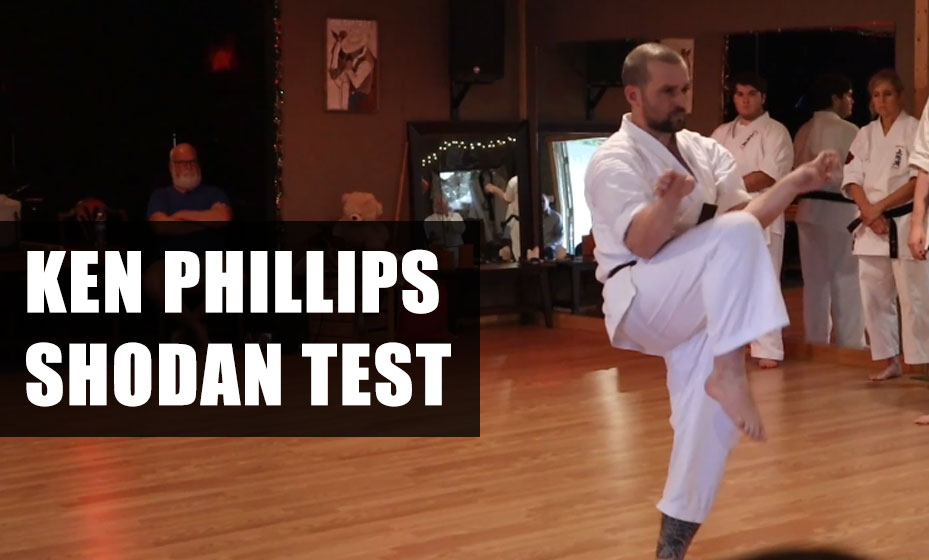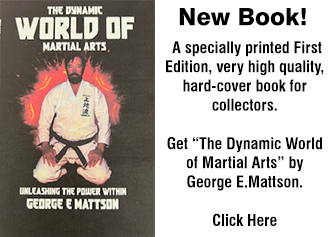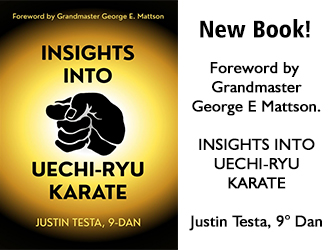by Kristin Amirault.
In a couple weeks it will be my 29th anniversary of wrapping a white belt around my waist and stepping onto the dojo floor for my first my Uechi-Ryu class. I feel quite fortunate to still be practicing, exploring, and sharing what I’ve learned. But best of all, I’m still learning and growing in my ability and knowledge. Recently the focus in my personal training has been on Sanchin which, of course, affects the rest of my Uechi. “All is in Sanchin”, is a phrase which I have come to have a much deeper appreciation for and greater understanding of, since joining the Mattson Academy and doing the OldWay course over 3 years ago. What Mattson Sensei most often corrects in my kata or my Hojo Undo videos is the basics, which all stem from Sanchin.
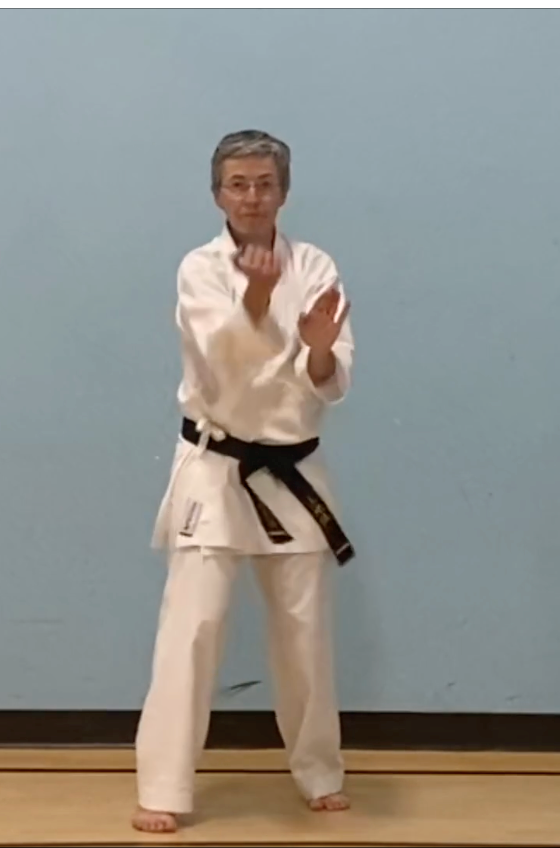
For my July meeting with Sensei, I decided to film my three levels of Sanchin. He picked out a few things in each kata for me to work on – making my opening hand movements more circular, doing more of a crescent step in my level 2 kata, working on my level 3 timing, not drawing my double arm thrusts and wauke thrusts back so far. Those and a few other things were my focus over the next few weeks until I filmed the 3 kata again.
When we met in August to review my “new and improved” 3 levels of Sanchin, Sensei made no mention of the techniques and moves we’d discussed the month before! Hurray! I seemed to have successfully made those corrections!!!! But, of course, there were new things to work on. Things that both of us could see and were not by any means new to me… During the time I recently spent working on Sanchin, paying attention to certain areas, my mind and body seemed to have gotten lax and forgotten about a lot of those basics I have been working on so hard for the last 3 years.
When I joined the Mattson Academy, I can say that I believe that my Uechi was pretty good, but I have learned much that has made it better. I am now stronger without trying to use strength and tension in my techniques. I have also learned to use more natural movements, which my body is much happier with. Of course, making these changes has meant overriding about 26 years of some muscle memory….. so it’s still a work in progress.
One of the most difficult habits for me to overcome in my kata is straightening my arms too much, and sometimes hyperextending them on thrusts and in my waukes. I think my tendency to reach out so much stems from being a small person; my opponents are almost always larger and stronger than me. When doing kata I am thinking about reaching out to stop them. But striking with hyperextended arms locks my arms to my shoulders and takes my body out of the equation. This makes it an arm movement instead of striking with my body. Not what I want to do, especially against larger opponents. Straightening my arms too much in my wauke thrusts is something I have been guilty of fairly often, but I also often do it in my wauke circles. Mattson Sensei calls this the “windshield wiper”. If you’ve heard this term before you might know what I’m talking about. If you have the tendency to hit your belt when doing the lower part of your wauke you are probably guilty of this as well. The problem with circling with straight arms is that, besides not having your arm in the strongest possible position – Sanchin – your block is actually drawing an attack into your body instead of intercepting, controlling or deflecting it.
Another aspect of Sanchin that I’ve been working on is targeting my thrust. As a white belt I was taught to target the center of the body or solar plexus with my thrusts and punches. I did this by moving my hand laterally across my body to the center line. If you have shoulders issues as I do, perhaps you do this as well. What I’ve come to learn, is that it’s much better and more natural to target my thrust using slight body and shoulder rotation. When you do the double Sanchin arm thrusts, your arms should be almost parallel. When you do a single thrust or punch, your arm should be in the same position as a single double thrust. If you want to strike to the center line with that technique, the easiest, most natural, least stressful way to do this, is to turn your body slightly as you throw your strike. The beautiful thing about the OldWay training is that it teaches us to “cheat” – ie: to be efficient – by keeping muscle utilization to a minimum and not use extra effort or to strain areas of the body with improper technique. One of the most interesting discoveries I’ve recently made – a “light bulb moment” for me – is that when doing pad work or shadow sparring, I’m not making these mistakes that keep returning in my kata. When I shadow spar or am hitting focus mitts or the heavy bag I don’t over extend my reach or strain my shoulders by moving my hands laterally across my body. Instead, I move naturally and let my body control the action. I do this without thought. In kata, I often let my mind get in the way and let it dictate to my body what it thinks it knows. Good to know: pay more attention to what my body wants to do and less to what my mind thinks should be done. And how do I do that? I go back to what I learned in the OldWay course. I have revisited the OldWay lessons many times over the past 3 years. I have also used the method of slow, flowing, accelerated, mindless repetitions of movements repeated for several days, to work on many techniques or sequences from kata or kumite. That is the best method I have found to build new muscle memory. I have spent many hours in my yard and kitchen losing myself in the movement of different techniques and sequences this way. But more than anything, I’ve practiced used the OldWay to practice the wauke, starting with just the circle, adding the chamber, adding the thrust, then adding movement – sliding, stepping, forwards, backwards, turning, stepping off. All time well spent. Although my wauke is still a work in progress, I have a much greater understanding of it and I know that it has improved from what it was 3 years ago. And as Mattson Sensei recently reminded me, “The wauke is the most important movement in our style”.

